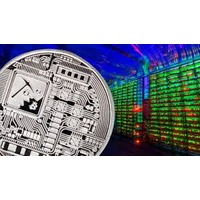
Crypto Mining on a Budget: Your Starter Kit Guide!
Crypto Mining on a Budget: Your Starter Kit Guide! Graphics Processing Units (GPUs) have become synonymous with crypto mining, offering a versatile and powerful solution for enthusiasts and professionals alike. GPU mining involves utilizing the computational power of these graphics cards to solve complex mathematical problems, a fundamental process in validating transactions and securing blockchain networks.
GPU mining, or Graphics Processing Unit mining, has become a popular and widely adopted method in the cryptocurrency world for several compelling reasons:
1. Versatility:
- Flexibility Across Cryptocurrencies: Unlike specialized mining hardware like ASICs (Application-Specific Integrated Circuits), GPUs are versatile. They can be used to mine a variety of cryptocurrencies, allowing miners to switch between coins based on factors such as profitability, market trends, or personal preference.
2. Accessibility:
- Widespread Availability: GPUs are readily available and accessible to a broad audience. This accessibility contributes to the decentralization of mining operations, aligning with the decentralized ethos of many cryptocurrencies.
3. Constant Technological Evolution:
- Regular Hardware Updates: The GPU market experiences frequent updates and releases of new models with improved performance and efficiency. Miners can leverage these technological advancements by upgrading their rigs to stay competitive and adapt to changes in the cryptocurrency mining landscape.
4. Parallel Processing Power:
- Efficient Handling of Parallel Workloads: Cryptocurrency mining involves solving complex mathematical problems, often using parallel processing. GPUs are designed to handle parallel workloads efficiently, making them well-suited for the specific computational tasks required in mining.
5. Decentralization:
- Contributing to Network Decentralization: The decentralized nature of GPU mining contributes to the overall decentralization of blockchain networks. With a diverse array of miners using GPUs, it helps prevent any single entity from gaining excessive control over the network.
6. Community Involvement:
- Engagement from Enthusiasts: GPU mining has attracted a vibrant community of enthusiasts who are passionate about cryptocurrencies. This community engagement fosters knowledge-sharing, collaboration, and the development of open-source mining software, contributing to the overall growth and resilience of the crypto ecosystem.
7. Upgradability:
- Adaptability to New Algorithms: As new cryptocurrencies emerge with different mining algorithms, GPUs can be reconfigured to adapt. Miners can switch to mining newer coins or those with more favorable reward structures, enhancing the overall versatility of GPU mining rigs.
8. Educational Value:
- Learning Opportunities: GPU mining provides an educational platform for individuals interested in understanding the technical aspects of cryptocurrencies. Setting up and optimizing a mining rig involves learning about hardware, software, and blockchain protocols.










